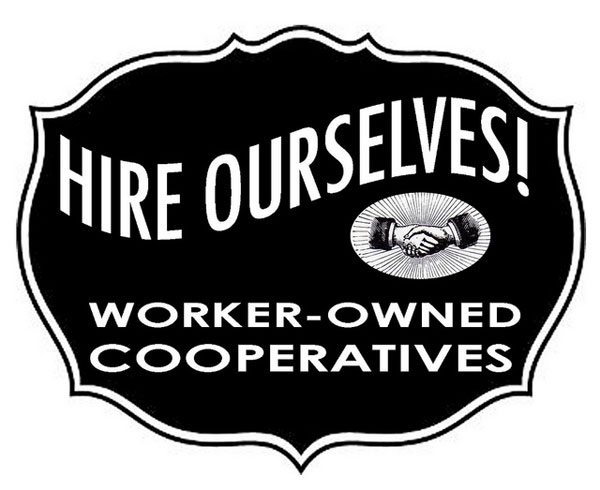
May 21, 2018; Fast Company
At NPQ, we have broadly covered the growing pace of conversions to employee ownership, prodded in part by the retirement of Baby Boom–generation business owners. Now, the Democracy at Work Institute (DAWI), a nonprofit created by the US Federation of Worker Cooperatives, is seeking to step up its efforts to reach small businesses who might benefit from selling their businesses to their employees.
On a website called Becoming Employee Owned, DAWI profiles a number of businesses that have successfully become worker cooperatives, including 10 short video stories and more than 40 written case study profiles.
Among the video profiles are stories on A Child’s Place, a New York City childcare provider; a landscaping company in Massachusetts called A Yard & A Half; and a company called Metis Construction in Seattle. Each video highlights the role of workers—and how becoming owners increased their sense of responsibility and enthusiasm for their work.
Eillie Anzilotti in Fast Company writes that in addition to the demographic challenge of the Baby Boom generation hitting retirement age and looking to exit their businesses, another driver is simply the challenging atmosphere facing small business in the US. “As banks have consolidated, capital for small businesses has grown scarce,” Anzilotti notes. In making this statement, Anzilotti was referred to a report released last year by the Washington, DC-based Economic Innovation Group, which found that more small businesses were closing than opening, “revealing a stark reversal from decades of growth,” according to Mike Maciag in Governing.
Melissa Hoover, executive director of DAWI, says the videos were created with the goal that “local outlets and local service providers use these resources to demonstrate that this can be done.” According to Hoover, DAWI is already seeing an uptick in queries as a result. “This is not a hard sell,” Hoover says. “What we’ve found is it makes intuitive sense to people.”
Sign up for our free newsletters
Subscribe to NPQ's newsletters to have our top stories delivered directly to your inbox.
By signing up, you agree to our privacy policy and terms of use, and to receive messages from NPQ and our partners.
Hoover also outlines the steps involved in the conversion process, which share some elements with a model in Maine covered by NPQ earlier this month. The first step is simply to educate business owners about the idea, which is where the videos come in. A second step is to determine economic suitability for the conversion. Anzilotti writes that, “Generally, co-ops tend to form from businesses with a minimum of 20 employees, and no more than a few hundred (though there are exceptions—Cooperative Home Care Associates in New York is the country’s largest worker-owned cooperative and employs nearly 2,000 workers). The relatively manageable size ensures that each employee can purchase a share of the company that’s large enough to be meaningful, but not so expensive as to be prohibitive. Longevity in the community is also a benefit.”
The third step is to identify a source or sources of capital. Hoover concedes that, “We don’t have the kind of values-aligned capital that understands how to finance conversions, understands the risks, or understands the upsides of cooperatives.” That said, financing options do exist and are growing. Anzilotti notes that Child’s Place took out a loan from The Working World, a New York City-based community development financial institution (CDFI) that manages a $5 million loan fund specifically for worker-owned businesses.
The last critical step is, as Anzilotti puts it, “learning how to effectively structure and govern a collectively owned business.” To this end, DAWI has developed the School for Democratic Management, which provides both in-person and online education for new co-op managers and worker-owners.
Having an extended transition period can help. For example, A Yard & A Half Landscaping started convening a group of employees to prepare for the transition a full five years before the conversion; since it became a co-op in 2014, revenues have climbed from $2 million to $3.2 million, while wages increased from $17.02 an hour to $19.29 an hour.
Supportive policy for worker co-ops is also becoming more common and makes conversions easier. For example, in August 2016, the US Department of Agriculture’s Business and Industry Guaranteed Loan Program added new financing vehicles that “specifically support the transition to worker-owned businesses, like financing models staged over five years to support a more distributed sale,” notes Anzilotti. As NPQ has covered, there is also legislation that has passed committee votes in both the Senate and the House that if enacted into law could make it far easier for worker co-ops to access US Small Business Administration guaranteed loans and other resources.
Hoover says that even though “Co-ops are not whiz-bang businesses that are going to get anybody rich,” DAWI has seen “growing interest” in worker cooperatives in both rural and urban communities. “Business retention makes more sense than trying to attract Amazon’s HQ2,” she adds. “Why don’t we invest in our local ecosystem and retain what’s already here?”—Steve Dubb











